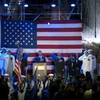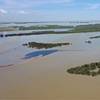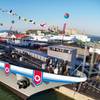Some of the newest OSHA regulations impacting the shipyard industry deal with Personnel Protective Equipment (PPE). When this set of standards was first published, many questioned the need for them - after all, how complicated are hardhats, safety glasses or steel-toe boots?
At first glance, a PPE program does not seem very complex or difficult to implement; however, I have found this is a consistently deficient area in the safety audits I have performed. When I visit workplaces, I often find inappropriate PPE is being used or PPE is not being used at all.
The identification of the appropriate PPE associated with a particular task or job classification is the first step in an effective PPE program.
In the past, companies took a rather reactive approach to identifying hazards that might be mitigated by PPE. Typically, companies only required safety glasses after several workers sustained serious eye injuries and the local attorneys were able to extract enough money in litigation to bring the problem to the CEO's attention.
In the new PPE standards, OSHA dictates a more proactive approach be taken to identification of hazards requiring the use of PPE. A formal hazard assessment must be conducted based on either the work task or worker job classification. OSHA gives employers considerable leeway in meeting this requirement. In fact, employers do not even have to document their hazard assessment other than by creating a written statement that it has been done.
Of the several possible ways of performing a hazard assessment, I prefer to use a method based on Job Hazard Analysis (JHA). JHA's have been a fundamental part of safety programs for years, and are conducted by breaking a work task down into steps and identifying the hazards associated with each step.
Once this is accomplished, a means of mitigating each hazard is identified such as engineering controls or PPE. In my experience, JHA's are best performed by limiting the number of steps to fewer than 10 (work tasks requiring more than 10 steps probably require multiple JHA's) and involving several workers with broad experience. The completed JHA should be communicated to workers and the results incorporated into vocational and safety training programs.
Once the appropriate PPE is identified, the next challenge is to get employees to actually wear it.
Training is necessary to make workers understand the hazard and the consequences of failure to wear PPE. People are not going to wear a hardhat unless they are convinced something might fall on their head and it might severely injure them. Testimonials from fellow workers who have escaped injury because of their PPE are a particularly effective tool for establishing the need for PPE.
Another issue that must be addressed if workers are to buy into the PPE program is worker acceptance of the particular model or brand of PPE to be used. When you interview a worker who is not complying with the company PPE requirements, you will usually discover the worker does not like to wear the PPE because it is uncomfortable. Although you may question merit of such sentiments, the comfort and aesthetics of PPE must be addressed in order to achieve full compliance with the PPE program.
A few years ago, a major company located on Gulf Coast learned a hard lesson about PPE and vanity when they tried to adopt a new type of hardhat. The president of the company decided he would improve head protection in the workplace by providing workers with a Kevlar hardhat based on the design of the current helmet used by the U.S. military.
The company ordered one thousand of these custom designed hardhats at a cost of $100 each. Within two months, all the new hardhats were back in the warehouse collecting dust because the workers simply refused to wear them.
The main problem was the new hardhats had an odd appearance and workers thought they looked a bit like "Nazi Storm Troopers" when they wore them. If the president of the company had asked for worker input on the selection of hardhat, he might have avoided a $100,000 mistake.
I recommend once the appropriate PPE is identified that workers be allowed to select the hardhat, safety glasses, or steel-toe footwear they prefer from a variety of models. The small amount of additional logistical complexity this involves is well worth the improvement in worker compliance with the PPE program.
The final step necessary to assure worker compliance with the PPE program, is consistent enforcement. All workers performing jobs that require the use of PPE must wear it, and workers that fail to do this must be subject to immediate disciplinary action.
Contradictory messages on the importance of PPE must not be sent by allowing visitors, subcontractors, vendors, and managers to ignore PPE requirements. As far as workers are concerned, if the Operations Manager walks through a designated hardhat area without a hardhat, the rule must not be too important.
Charles Simpson, CSP, is a New-Orleans-based consultant, specializing in safety issues related to hazardous chemicals. He can provide assistance with training and the development of written safety programs. Contact him at Safety Consulting Associatioes; tel: 504-624-8060.
Sponsored Content
MSC Sets a New Standard for Time Off in 2025, Plus Earn a $38,340 Bonus as an Able Seaman!

Featured videos

AI to the Rescue: Zelim’s ZOE to be Installed on Cruise Ship

Xenos Marine Takes Aim at the Gulf Salvage, Decommissioning Markets
April 2025
 Read the Magazine
Read the Magazine

 Read the Magazine
Read the Magazine
This issue sponsored by:

Massa Products Corporation: Innovating Sonar Technology & Securing the Future of the Maritime Workforce
Subscribe for
Maritime Reporter E-News
Maritime Reporter E-News is the maritime industry's largest circulation and most authoritative ENews Service, delivered to your Email five times per week







